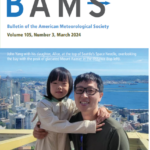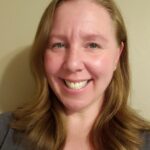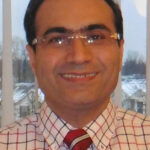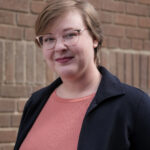After a successful launch of the pilot course during the 2014 spring semester, Professor Fernando Miralles-Wilhelm’s Sustainable Modeling course will be officially added to the University of Maryland curriculum in Spring 2015.
Open to both undergraduate and graduate students, the UMD Atmospheric and Oceanic Sciences (AOSC) hosted course requires no prerequisites. Miralles-Wilhelm created the class group on Facebook, posting all of the YouTube videos and class materials to the page and keeping all assignments and discussions online.
“It has this hybrid format where a lot of stuff is online, so it may be appealing to people who can’t come to class,” said Miralles. “It was a lot of fun- I spent a lot of time, but I wouldn’t regret a second I spent on it.”
Miralles-Wilhelm created Sustainable Modeling to focus on information he learned in a course he took back during his undergraduate education in 1982 called Humans and Their Environment.
In this course, Miralles-Wilhelm read the book Limits to Growth, which predicted through computer modeling analysis the limits of exponential population and economic growth when faced with finite resources.
“I kept up with what was happening with Limits to Growth, because it was published in ’72,” said Miralles-Wilhelm. “In 2002, they published a 30-year revisit to Limits to Growth, and what they showed was that the thrown out predictions to limits of growth were becoming true after we observed them.”
“To me it was cool that we could actually use models to simulate what could happen to Earth when we combine all these things, like pollution, population and energy,” said Miralles-Wilhelm. “Teaching a class like this is actually what made me choose my career.”
Kristy Weber, a recent University of Maryland graduate who majored in aerospace engineering and atmospheric science, said she took the course because of its connections between mathematical equations and the environment.
Weber stated that in contrast to a more traditional undergrad course, she enjoyed the class being presented in higher-level context.
“It was very open-ended- it was taught as a graduate course, so unlike my engineering classes, it wasn’t really work-intensive,” said Weber.
However, Weber did note some unique challenges the course presented, given its social media foundation.
“I have trouble dividing social from academic online, so every time I went to check up on the class I would get distracted by someone messaging me, etc.,” said Weber. “I would’ve preferred it to be on a website like ELMS, because every time I go to that site I’m going purely for academics.”
For recent graduate Tom Doody, the course offered a unique combination of scientific and socio economic principles.
“One of the reasons why Sustainability Modeling was interesting was [not only] the combination of scientific issues, but also the economic and policy issues that I like to think about,” said Tom Doody, who just finished his master’s degree in Geology at the university. “The interdisciplinary part of it was probably the best part.”
Doody said that he enjoyed the class’s ability to connect people from different perspectives and different backgrounds, but did not like the lack of human interaction. Further, Facebook’s open-access format allowed people not in the class to have access to course material without paying tuition fees.
“I think the benefit of [the course being online] was the ability to respond to topics when it was convenient for me, and being able to track conversations in the written form,” said Doody. “What was lost, however, was the back-and-forth interaction that would happen in a live discussion.”
Miralles-Wilhelm said the pilot course and students’ reviews allowed him to see what worked and did not work, and he plans to make the course a more hybrid version of an online course, adding live video discussions with the class and improving the flow of online discussion posts.
“I have a number of colleagues not only at Maryland, but around the world that I would like to interview to get their certain focus point, their point of view to focus on as an additional set of materials,” said Miralles-Wilhelm.
While the pilot course this past spring only included 10 students and was not strongly advertised, Miralles-Wilhelm hopes that the course’s size will grow because of its virtual accessibility for students.
“I’m looking forward to seeing how this class evolves,” said Miralles-Wilhelm. “I want to enrich it with other material, other folks and see how it evolves- it’s been a long time in my brain, so I’m glad to see it materialize now.”






